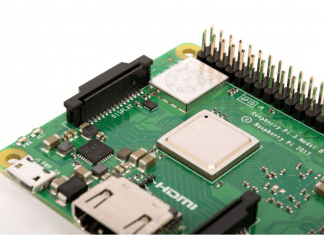As you know, nowadays people got used to everything automatically. Stuff that moves on its own does not surprise us, but the words like electric actuators or force equations may astonish the cleverest. In order to lift very heavy constructions or create devices, like automatically moving doors or even put down the bed at a hospital, you will obviously need to choose the right Linear Actuator Force. And that is possible only with the help of special equations. Having missed the step of counting the force, you may never reach your goal or even break something you have already spent time on creating. As it is easier to pull down than to build, spend several minutes, rack your brains, and welcome to the world of physics.

First of all, check out the terms that will be used in the formula you are looking forward to understanding and implement in your case. You may find the units of forces and other things that will come in handy and better the understanding.
(Guide) How to Calculate Linear Actuator Force
T= Total Linear Force (lbf)
FF = Force From Friction (lbf)
FA = Acceleration Force (lbf)
FG = Applied Force (lbf)
WL =Weight of Load (lbf)
U = Angle of Inclination (lbf)
TA =Acceleration Time (sec)
V = Final Velocity
¼= Coefficient of Sliding Friction
G = Acceleration of Gravity = 386,4 in/sec
Some of the integral parts of the equation have to be calculated in advance. Just imagine you are to thrust mass of 200 pounds on 2 inches. Your time is limited for, say, 2 seconds. Let’s assume the object is inclined at 30 degrees. Then the leaning coefficient of friction will be 0,15.
Never forget about resistance. There is always the opposing force that equals 25 pounds against the actuator. Always take that into account as well.
Read the info above for several times, so that you get it. Look through the unfamiliar notions as we explain the calculations later on. Then let’s move to the action.
The first thing to calculate is the total force. Here you have to put together 4 constituents in order to get the necessary element of our main equation. These are acceleration, friction, applied force, and gravity.
Total Linear Force = FF +FA + FG + FP
Having summed up the forces, move on to the calculation of the total force equation.
T = WL ¼ cos(??)+(WL/386.4)*(v/ta)+WL sin(??) + Fp
Here you have to insert all the necessary numbers of your particular situation. Here we will demonstrate the numbers mentioned above. Be very precise with the numbers!
WL = 200 pounds
¼ = 0.15
?? = 30°
Cos(??) = 0.866
V = 8 inches
Ta=0.2(2 sec)
Sin(??) = 0.5
FP = 25 pounds
Next, you can see the right equation with all the correct numbers. We highly recommend training in this example in order to get the most precise answer in your real case.
T = 2000.150.866+(200/386.4)(8/0.2)+2000.5+25
Having made all the simple actions, you will get the following equation.
T = 26+20.73+100+25=171.73 lbf
Keep in mind that solving the equation in the right way is still not the final solution to you. You have to work through your task, go to websites, and decide which actuator will be a cornerstone of your project. Now in our case, we understood that the necessary rating of a Linear Actuator Force we should pick would be up to 200 pounds. Only this way it will be 100% effective. For the kind of load we have today, we would choose a standard 12-volt Linear Actuator Force.
Conclusion:
In conclusion, we would like to wish you good luck with your physics/math calculations and choosing the perfect device. Remember that each element has its place in equations because without a single number, the whole, overall results will not mean a thing.



![[Buy Now] BBEN G16 Notebook Review ‘Offer’ (Buying Guide) BBEN G16](https://www.techinpost.com/wp-content/uploads/2017/12/image001-324x235.png)


![[Buy Now] PiPO W2S Review Tablet PC ‘Offer’ Price (Buying Guide) PiPO W2S](https://www.techinpost.com/wp-content/uploads/2017/12/sku_445868_1-324x235.jpg)




